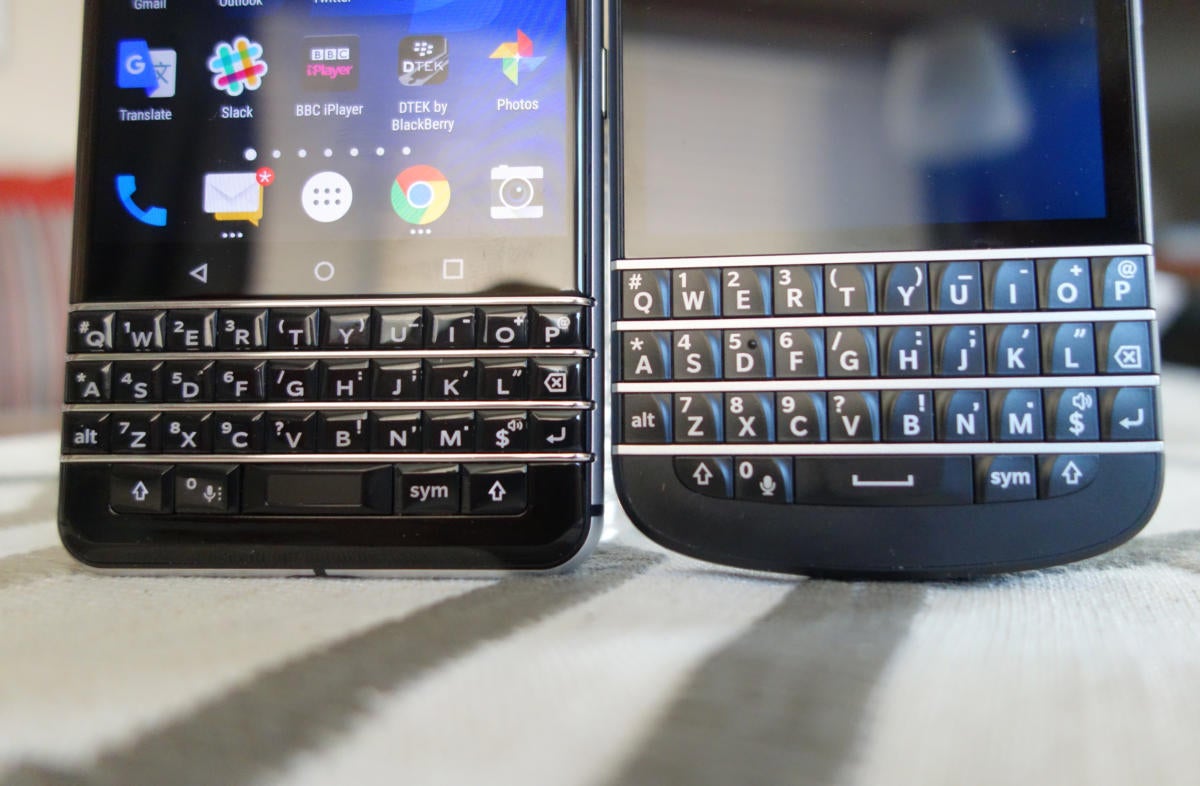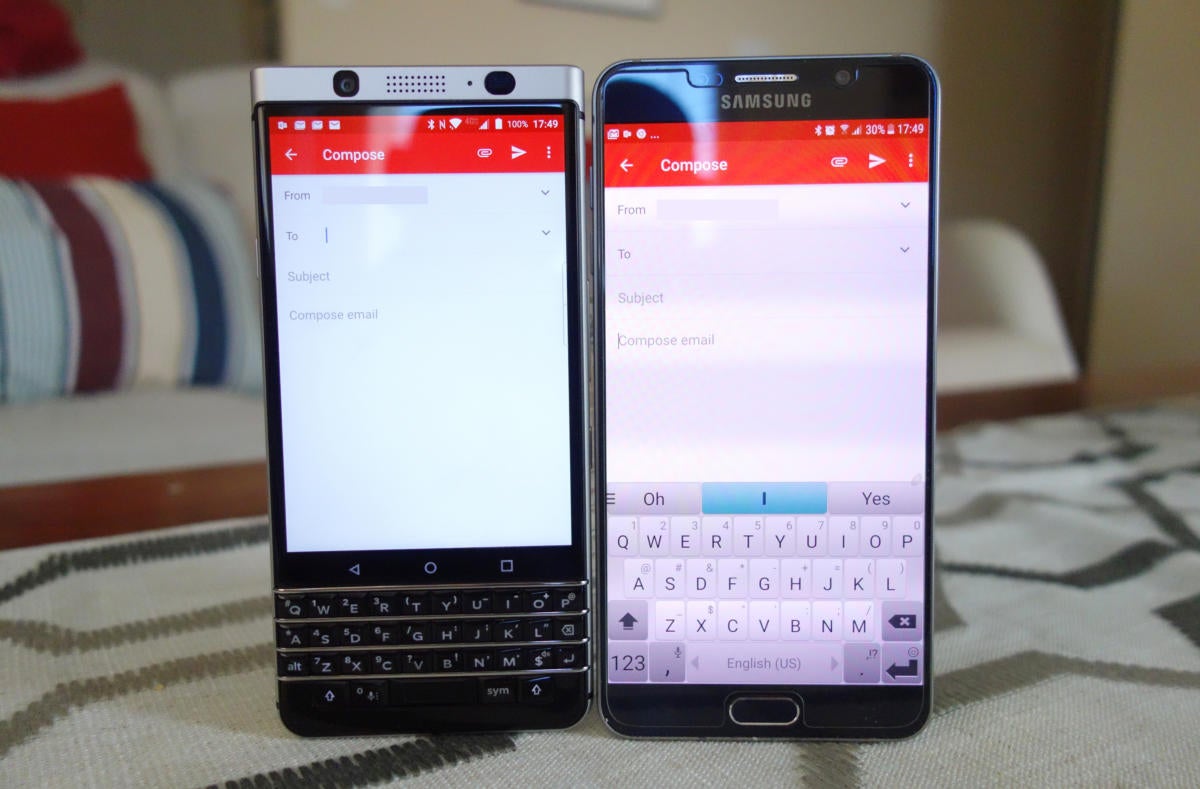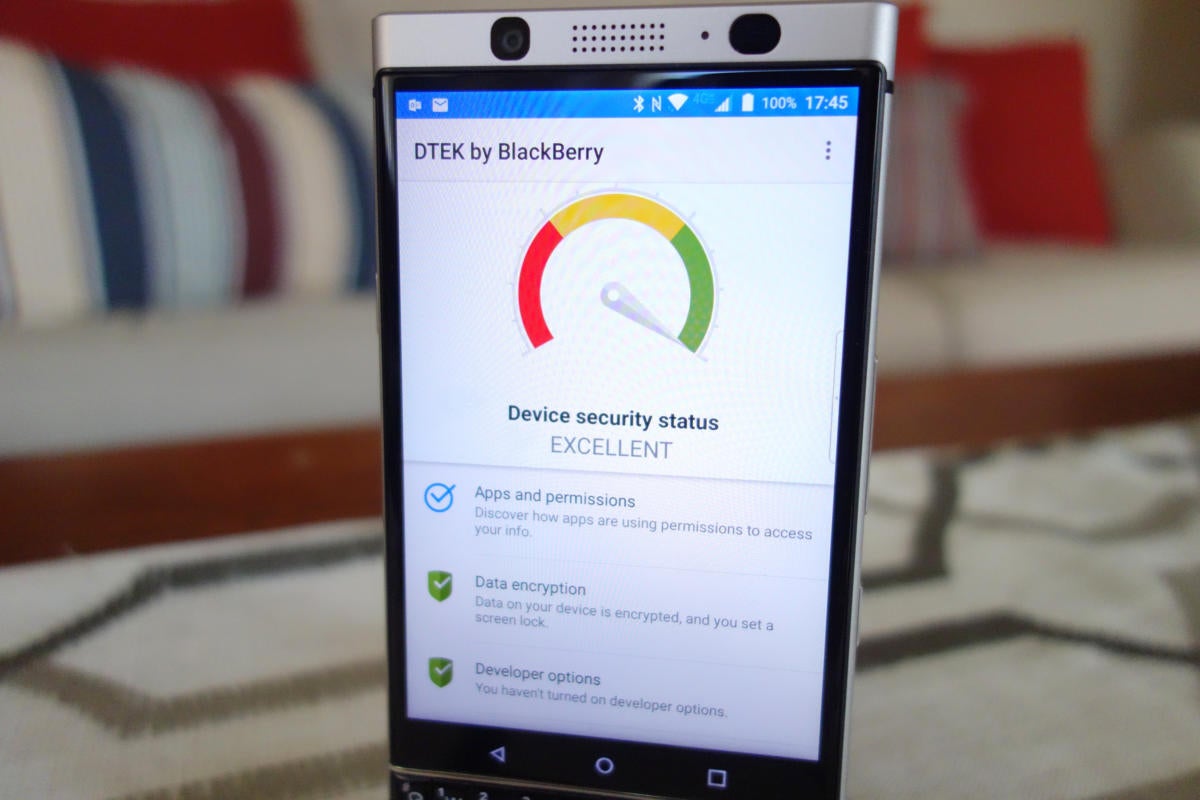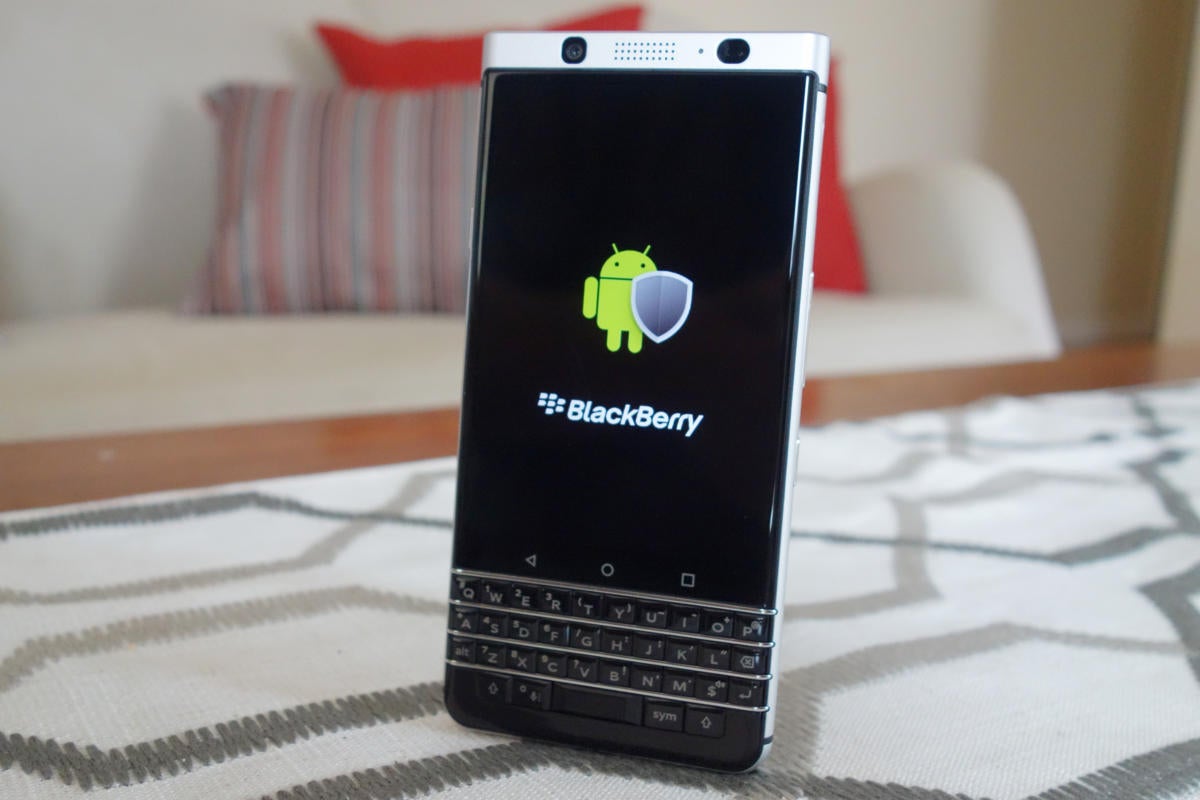
Here’s a surprise: BlackBerry is back with a new handset and it’s pretty good.
I know, I know, you’ve heard this before. Several times over the last few years BlackBerry has attempted to make a comeback and each time it’s come to nothing, so what’s different now?
The iconic BlackBerry hardware keyboard has been married with Android in the BlackBerry KeyOne. Combine those with several software apps from BlackBerry and the KeyOne is worth a look if you’re shopping for a new smartphone, particularly if you spend a lot of time on email, social media or messaging.
The handset is produced by TCL, a Chinese phone maker that recently acquired rights to the BlackBerry brand for smartphones. BlackBerry, based in Canada, is still responsible for the software.
The phone goes on sale at the end of May but for a little over a week I’ve been using it as my primary smartphone. That’s not really long enough to discover all the quirks and features, but here are some initial impressions.
The keyboard
The star feature of the KeyOne is the hardware keyboard. The chances are, if you used a BlackBerry in the company’s heyday, you remember the keyboard fondly. In this regard, the KeyOne doesn’t disappoint.
 Martyn Williams/IDGNS
Martyn Williams/IDGNSThe keyboard on the BlackBerry KeyOne.
It has a nice feel and a satisfying click when the keys are pressed. Two-thumbed typing is also possible—in fact, I’m writing a portion of this review on the phone and have avoided typos so far.
It certainly takes a bit of getting used to, but my typing speed got better as the week went on.
However, as welcome as the keyboard will be for BlackBerry fans, it’s not perfect. I found the keys a little on the small side for my fingers. They are wider than they are tall—a difference from the keyboard on 2013’s Q10—and there is a little side-to-side play in them.
 Martyn Williams/IDGNS
Martyn Williams/IDGNSThe BlackBerry KeyOne (left) alongside the BlackBerry Q10 reveals the older phone has a slightly larger keyboard.
The screen
The hardware keyboard necessitates a sacrifice in screen size, but I haven’t found it to be too much of a problem and it shouldn’t immediately put you off considering the phone.
The phone has a 2:3 aspect ratio 4.5-inch screen, which is big enough for work, messaging and social media. To put that into perspective, while it’s a good deal smaller than the screen on phones like the Galaxy S8, it’s only slightly smaller than the 4.7-inch screen on the iPhone 7.
Unlike keyboard-equipped BlackBerry phones of the past, the screen is large enough to run real apps without compromise, although gamers might find it a bit cramped. For social media and email, it works well.
 Martyn Williams/IDGNS
Martyn Williams/IDGNSThe BlackBerry KeyOne (left) alongside a Samsung Note 5 reveals the former has more display space in typing mode despite having a smaller screen.
In fact, the KeyOne had slightly more screen space available than my Samsung Note 5 when the software keyboard was displayed on screen.
Software for productivity
Manufacturer-installed apps are usually pretty useless, but the BlackBerry software in the KeyOne is actually pretty good.
Chief among them is the Hub, a longtime BlackBerry feature that pulls email, SMS, messages from social media apps, instant messaging and other phone alerts into a central message box.
It makes staying on top of messages a breeze and is especially useful if you have a lot of accounts or get a lot of messages. Within a couple of days, it had become the primary way I handled all incoming communications.
 Martyn Williams/IDGNS
Martyn Williams/IDGNSBlackBerry’s DTEK security software running on the BlackBerry KeyOne.
And there’s also the DTEK security app. It brings all the security and permissions settings of the phone together in a single place. Not only can you see the permissions each app has for your phone but it tells how often the app uses that permission—it’s a real eye opener.
It can also be set to alert in realtime when a chosen app uses a chosen permission—for example when the GPS location is accessed or an app attempts to send a text message. It’s a level of visibility I haven’t seen in Android phones from major manufacturers and it could provide some surprises about what all those apps are doing.
Customization
One of the best features on the phone is a convenience key on the right-hand edge. It can be programmed to open an app, speed dial a number, open text messaging, switch on the flashlight or any number of other useful shortcuts.
It’s a great idea and I was pretty happy with its inclusion, then I discovered the entire keyboard can be programmed the same way. So with 52 programmable keys, I can press “T” to launch Twitter, push “C” to open the camera, tap “M” to call mom an so on. It’s a surprisingly useful feature once you get used to it.
 Martyn Williams/IDGNS
Martyn Williams/IDGNSBlackBerry’s KeyOne smartphone
The hardware
With its rounded sides and edges, the phone is easy to hold and the textured back gives a bit more confidence that it can’t be easily dropped. This is in contrast to some recent all-glass phones that feel slippery.
It has a 12-megapixel rear camera, a generous 8-megapixel front camera and can shoot 4K video. Users can slot a MicroSD card in to extend storage and the battery is rated at 3,505mAh. That’s a pretty big battery and should ensure the phone lasts a day without dying.
Conclusions
BlackBerry is trying hard to restore its brand and the KeyOne brings some unique features to Android. Users who do a lot of email and messaging should especially give the phone a look. The security functions are a nice addition and the keyboard shortcuts and Hub software add efficiency.
The phone comes with Android Nougat 7.1, the latest version of the Android operating system, and monthly security updates are promised. And Android means that unlike previous BlackBerry phones, users don’t have to fear buying into a phone system that might become obsolete.
The KeyOne will be available in major markets from late May. It will cost $549, €599 and £499.


